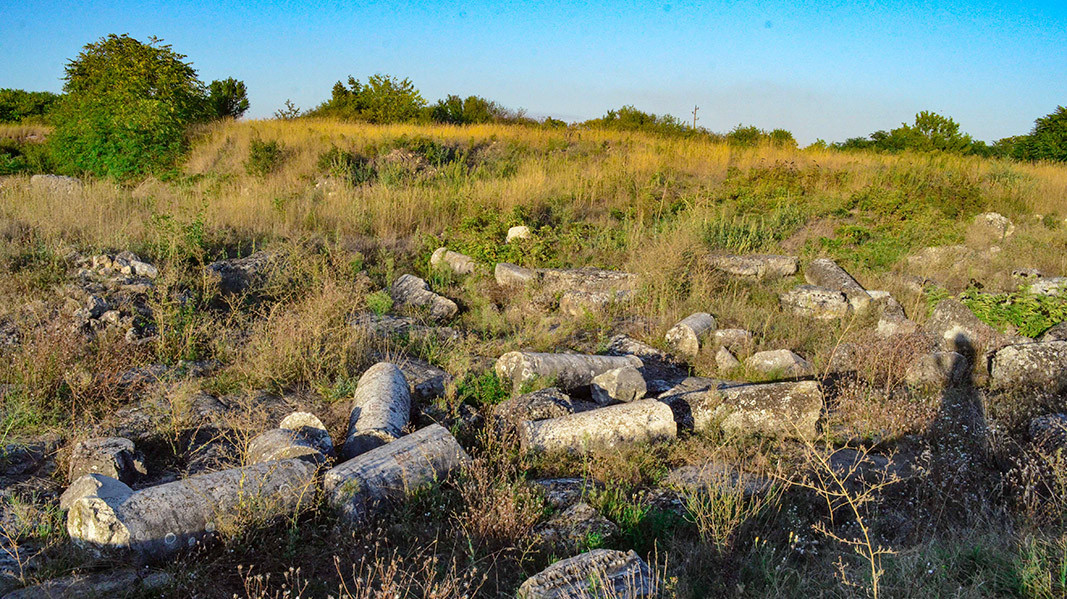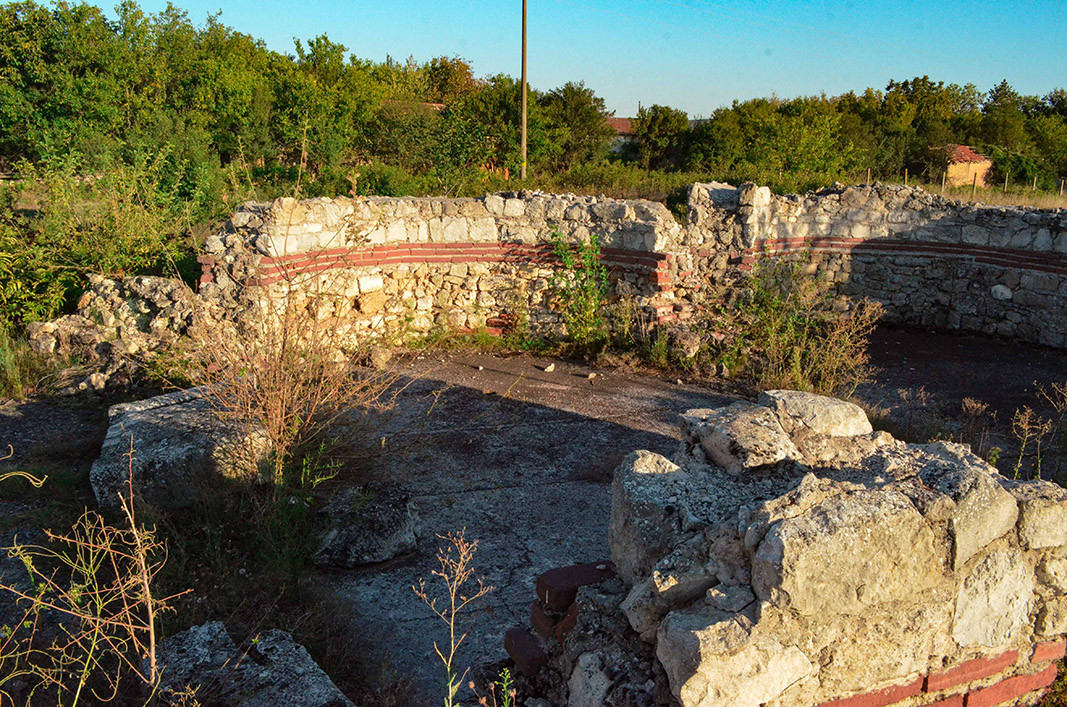It was once one of the most glamorous cities along the Danube. Today its ruins are scattered over a huge area in the vicinity of the village of Gigen. The imposing columns with capitals, exquisite consoles and marble blocks are piled indiscriminately on top of each other as if an unprecedented natural disaster had passed over the place. Today, the ancient city of Ulpia Oescus is today submerged in ruin and oblivion.

In the past, this was the most important colony of the Roman province of Lower Moesia. Impressive temples, beautiful buildings and wide boulevards with shops, lively at all times by passers-by and merchants of goods imported from all over the empire…. The inhabitants of Ulpia Oescus were wealthy and educated, and their lives were not much different from those of the empire’s capital in Rome. What do we know about the forgotten city along the Danube?
“The shape of the city is a pentagon, surrounded by very thick fortress walls, with gates, with towers… In general, the ancient Oescus constituted an impressive sight!” says Vladimir Naydenov, archaeologist at the Pleven Historical Museum. “It was located near the course of the Danube River, which over time, moved. The Iskar River, the longest in Bulgaria, was also nearby and it was also very full of water. Most likely there used to be a port near Oescus. There were adjacent settlements in the vicinity. Craftsmen and merchants lived there, and there were several necropolises…"

Streets crossing at right angles in the direction North – South and East – West formed the city quarters, and some of the buildings were constructed with green marble, imported from the area of the present-day city of Brescia /Italy/. Ulpia Oescus had two well-equipped baths, where the people relaxed and discussed important matters. But the heart of the city was the Forum – the public and political life was bubbling around it. Archaeologists have come across the remains of an unusually large civil basilica (100 metres by 25 metres). "Trade, court proceedings and the administration of justice in the ancient colony took place there," says Vladimir Naydenov.

Ulpia Oescus was also proud of its two beautiful temples. "We are talking about the temple of the Capitoline Triad, which represented a complex of three separate buildings dedicated to the gods Jupiter, Juno and Minerva and the temple of the goddess Fortuna – patron saint of the colony," Vladimir Naydenov explains.
The colony experienced its zenith during the reign of Emperor Constantine the Great in the 4th century.
"Perhaps the last glamorous moment for Oescus was the visit of Emperor Constantine for the opening of the bridge over the Danube," says Naydenov. This happened on July 5, 328. The facility connected Oescus and the city of Sucidava located on the opposite bank of the Danube in the territory of present-day Romania.
The bridge was made of wood but with stone foundations and it was more than 1 kilometre long – a real miracle of engineering thought in antiquity! But shortly after, the gradual decline of the city began. At the end of the 4th century it fell victim to the Gothic invasions. Later it was attacked repeatedly by the Huns, and after the end of the 6th century by the Avars, Proto-Bulgarians and Slavs. Gradually, the prosperous Ulpia Oescus became a declining provincial colony. And even Fortuna, its patroness, failed to save it from a tragic end! In the late 6th century, this part of the Balkans was shaken by a devastating earthquake. This put the closing page to a legend that few remember today!

English Rossitsa Petcova
In June 1878, after the 10 th Russo-Turkish war in a row, at the Berlin congress, the lands in the Balkans inhabited by Bulgarians were divided up into five. Northern Dobrudja was handed over to Romania. Serbia got the Sanjak of Niš. The lands..
The New Church Year begins on September 1. The month of September is the seventh month of the year according to the Jewish calendar. It is associated with a number of biblical events, which is why it was designated as the beginning of the Church New..
High in the canyon of the Rusenski Lom River lies one of the most impressive spiritual centers of Bulgaria. It is a complex of dozens of rock-hewn cells, chapels and churches carved on both sides of the river , which came to life in the 13th century..

+359 2 9336 661
